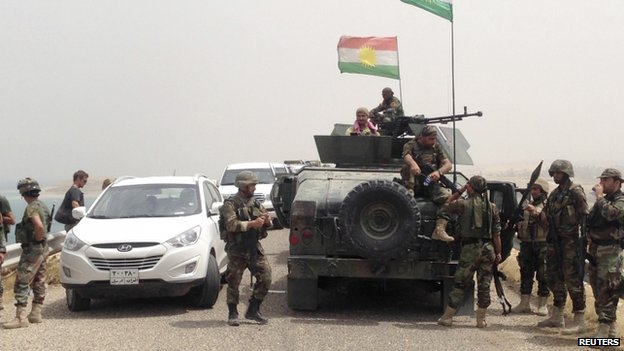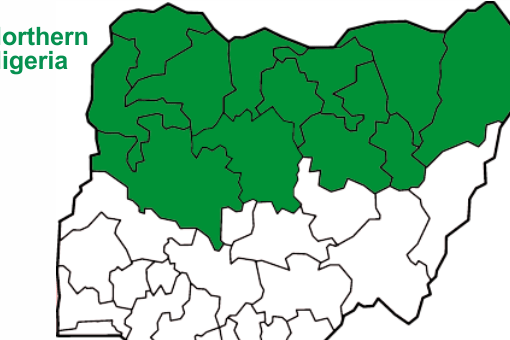US Navy fighters and drones provided air cover to Kurdish and Iraqi forces battling IS near the city of Mosul.
On Tuesday the group released a video showing the beheading of journalist James Foley, who went missing in 2012.
In it, the militants threatened to kill another US reporter they are holding.
But since the video was released, American forces have conducted 14 new strikes near the Mosul dam, a key facility recaptured from IS militants earlier this week.
The raids provided air cover as Kurdish and Iraqi forces pushed into the hills south-west of the site, Kurdish sources said. US officials said they had successfully eliminated vehicles and other targets belonging to IS.
The US has been carrying out strikes against IS – which has been seizing large parts of Syria and Iraq – since 8 August.
Barack Obama: “People like [IS] ultimately fail, they fail because the future is won by those who build and not destroy”
In its video, the group said it has killed Foley in revenge for such attacks. US President Barack Obama on Wednesday called the killing “an act of violence that shocks the conscience of the entire world”.
Failed rescue
Also on Wednesday, the Pentagon said the US had “attempted a rescue operation recently to free a number of American hostages held in Syria”.
It said the operation “involved air and ground components”.


“Unfortunately, the mission was not successful because the hostages were not present at the targeted location.”
It was the first time the US government had acknowledged that its forces had operated in Syria since the country’s civil war began in 2011.
The New York Times newspaper quoted unnamed US officials as saying the raid occurred at a oil refinery in the north.
They say commandos were dropped by helicopters, but found that the hostages had recently been moved.
Analysis: BBC Security Correspondent Frank Gardner
The race to identify James Foley’s killer has been taking many forms.
On the databases of MI5, the UK security service, in the records of the Police Counter-Terrorism Unit and out in the digital forums and social media postings of the internet, clues are being examined and assessed.
The man who murdered the American journalist in cold blood is thought to have probably come from London or south-east England. He is presumed to have travelled to Syria some time during the last three years and he will be well known to some in jihadist circles.
Unconfirmed reports say he is one of a small handful of Britons tasked with guarding Islamic State’s western captives. The militant who appears in the video is careful to keep much of his face hidden but the voice on the tape is distinctive and analysts believe it is only a matter of time before he is identified.
Bringing him to justice though, will be an altogether more difficult proposition.
The statement did not specify whether the operation had intended to rescue Foley, who was kidnapped in Syria in November 2012.
However, senior US officials – speaking on condition of anonymity – confirmed this. They added that the troops had killed several IS militants.
Foley, 40, had reported across the Middle East, working for US publication GlobalPost and other media outlets.
The parents of James Foley described their son as a “martyr for freedom”
‘Warning to Obama’
In the IS video, titled A Message to America, a man identified as James Foley is dressed in an orange jumpsuit, kneeling in desert-like terrain beside an armed man dressed in black.
He gives a message to his family and links his imminent death to the US bombing campaign in Iraq.
Clearly under duress, he says: “I call on my friends, family and loved ones to rise up against my real killers, the US government, for what will happen to me is only a result of their complacency and criminality.”
Then the masked militant – who speaks with a British accent – delivers a warning to the US president: “Any attempt by you, Obama, to deny the Muslims their rights of living in safety under the Islamic caliphate will result in the bloodshed of your people.”
After he speaks, the militant appears to start cutting at his captive’s neck before the video fades to black.
Another captive, identified as American journalist Steven Sotloff, is shown at the end, with the warning that his fate depends on President Obama’s next move.
Mr Sotloff was abducted in northern Syria a year ago.
Who are Islamic State (IS)?
- Formed out of al-Qaeda in Iraq (AQI) in 2013, IS captured Raqqa in eastern Syria
- By early 2014 it controlled Falluja in western Iraq
- It has since captured broad swathes of Iraq, seizing Mosul in the north in June and the Mosul dam in August
- The violence has displaced an estimated 1.2 million people in Iraq alone
- Pursuing an extreme form of Sunni Islam, IS has persecuted non-Muslims such as Yazidis and Christians, as well as Shia Muslims, whom it regards as heretics
- In July alone, IS expanded dramatically, recruiting some 6,300 new fighters largely in Raqqa, an activist monitoring group said
BBC.







